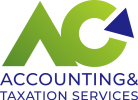Filing your tax return can be a daunting task, but with the right knowledge and guidance, it becomes a manageable process. For residents of New South Wales (NSW), Australia, understanding the steps involved in filing their tax returns is crucial to ensure compliance and maximize potential refunds. In this comprehensive guide, we will take you through a step-by-step process of filing your tax return in NSW.
Step 1: Gather Your Documents
Before diving into the tax filing process, gather all the necessary documents. These may include:
- Payment Summaries: Your payment summaries from employers and any government assistance payments you’ve received during the financial year.
- Expense Receipts: Keep receipts and records of work-related expenses, charitable donations, and any other deductions you may be eligible for.
- Bank Statements: Gather your bank statements to track any interest earned or bank fees paid.
- Investment Statements: If you have investments, collect the statements that reflect any dividends, capital gains, or losses.
- Health Insurance Information: Have your private health insurance details on hand, including statements for premiums paid.
Step 2: Determine Your Residency Status
Ensure you understand your residency status for tax purposes. Australian residents are taxed on their worldwide income, while non-residents are generally taxed only on income earned within Australia. If you’re unsure about your status, the Australian Taxation Office (ATO) website or seeking professional advice can help clarify this.
Step 3: Choose a Filing Method
In NSW, you have two options for filing your tax return:
- Online (myTax): The ATO’s myTax online platform offers a user-friendly way to complete your tax return. To use myTax, you must have a myGov account linked to the ATO.
- Tax Agent: Engaging a registered tax agent can simplify the process for you. Tax agents are qualified professionals with in-depth knowledge of tax laws who can help ensure accurate submissions and explore potential deductions.
Step 4: Access myTax and Begin Filing
If you choose to lodge your tax return online using myTax, follow these steps:
- Log in to your myGov account: Visit the myGov website and enter your login details. If you don’t have a myGov account, you’ll need to create one and link it to the ATO.
- Access myTax: Once logged in, navigate to the “Tax” section and select “Lodge.”
- Enter your details: You will be prompted to provide personal information, income details, and any deductions you’re eligible for. myTax will guide you through each step.
- Review and submit: Take your time to review the information entered. Correct any errors before finalizing and submitting your tax return.
Step 5: Utilizing a Tax Agent
If you opt for a tax agent to assist you, follow these steps:
- Find a registered tax agent: Look for qualified tax agents registered with the Tax Practitioners Board (TPB). You can find a list of registered agents on the TPB website.
- Provide your information: Share your income, expenses, and other necessary details with the tax agent. They will use this information to prepare and lodge your tax return on your behalf.
- Review and sign: Carefully review the tax return prepared by your agent. If you agree with the information, sign the return, and the agent will submit it to the ATO.
Step 6: Lodge Your Tax Return and Await Assessment
After submitting your tax return through myTax or via a tax agent, the ATO will process your return. If you have a refund due, the ATO will deposit it into your nominated bank account. If you owe taxes, you’ll receive a notice outlining the amount and due date for payment.
Step 7: Keep Records and Prepare for Next Year
Maintain copies of your tax return, payment summaries, and all supporting documents for at least five years. This ensures you have the necessary records in case of an audit or if you need to refer to them in future tax returns.
As the end of each financial year approaches, start organizing your documents and records early, making the next year’s tax return process smoother.
Conclusion
Filing your tax return in NSW, Australia, doesn’t have to be an overwhelming task. By following this step-by-step guide and being diligent in organizing your financial documents, you can ensure a smooth and accurate tax return process. Whether you choose to use the online myTax platform or seek assistance from a tax agent, staying on top of your tax obligations will help you avoid penalties and maximize potential refunds. Remember, when in doubt, seek guidance from tax professionals or refer to the ATO’s official resources for further assistance.


